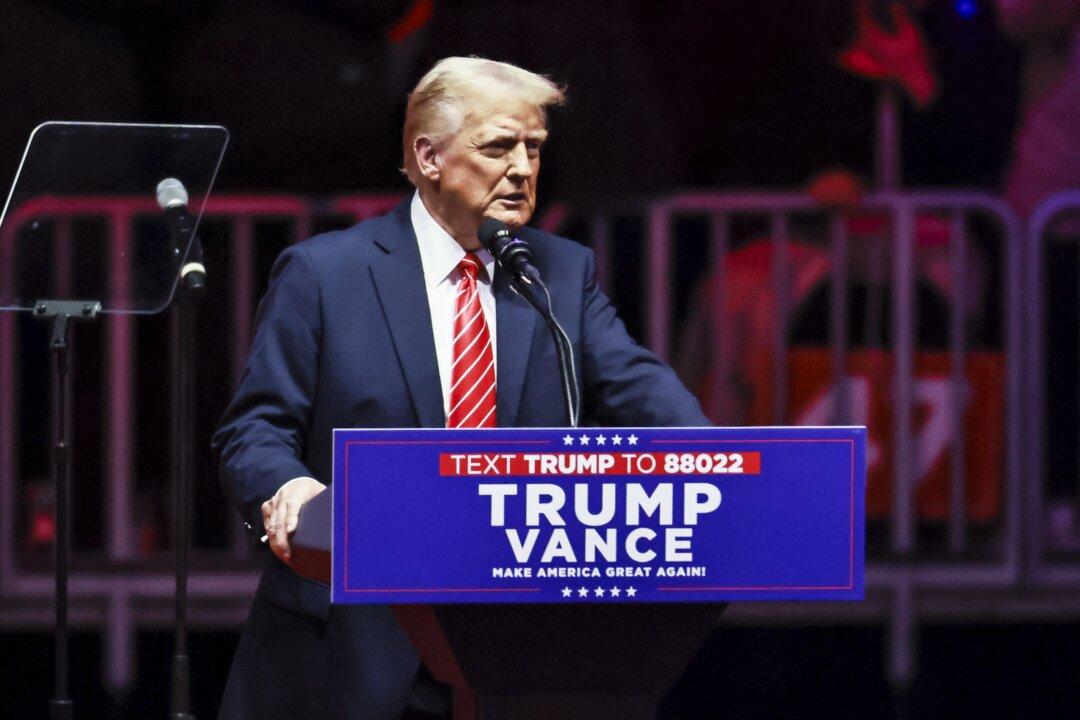Acting U.S. Defense Secretary Patrick Shanahan will likely approve the White House’s request to shift $3.6 billion from the military construction budget toward construction of a wall on the southern border, according to a Department of Defense official who spoke on the condition of anonymity.
President Donald Trump declared a national emergency on the southwest border on Feb. 15. The declaration enables the White House to shift funds from the military’s construction budget toward work on physical barriers on the U.S.–Mexico border.
According to the law, the defense secretary has to decide whether the wall is militarily necessary before money from the military construction budget can be used.
“We always anticipated that this would create a lot of attention and since moneys potentially could be redirected, you can imagine the concern this generates,” Shanahan told reporters traveling back with him from his trip to Afghanistan, the Middle East, and Europe. “Very deliberately, we have not made any decisions. We have identified the steps we would take to make those decisions.”
He added that military planners had done the initial analysis and he would start reviewing it on Feb. 17.

The White House announced Feb. 15 that it had secured $8.1 billion in funds for border wall construction. The funds consist of $1.4 billion approved by Congress, $600 million from the Treasury Department’s forfeiture pot, $2.5 billion from the Defense Department’s drug interdiction program, and $3.6 billion from the military construction budget.
Only the military construction funds required an emergency declaration. The White House said that the “funding sources will be used sequentially and as needed,” suggesting that as much as $4.9 billion of the funds can be used before any of the emergency funds from the military construction budget are tapped.
The U.S. defense official said Shanahan would meet with the service secretaries in the coming days to pick which specific projects the money should come from.
Shanahan said that planners had identified the different sources of money that could be used, but he hadn’t decided specifically what projects it would affect, and ultimately, it was his decision.
“I am not required to do anything,” he said.
Shanahan said he didn’t expect to take money away from projects such as military housing.
Poor standards of military housing were highlighted by recent Reuters reporting, which described rampant mold and pest infestations, childhood lead poisoning, and service families often powerless to challenge private landlords in business with their military employers.
“Military housing—what’s been interesting ... I’ve received a number of letters, I’ve had lots of feedback [saying], ‘Do not jeopardize projects that are underway,’” Shanahan said.
“As we step our way through the process, we’ll use good judgment,” Shanahan said.
On the campaign trail, Trump promised to build a wall on the southwest border to stop the flow of drugs, gangs, and illegal aliens into the country. Since he took office, Democrats have obstructed all attempts to secure funding for new barriers, but conceded after the president refused to sign any legislation that didn’t include funds for a border wall.

The concession consists of $1.4 billion for 55 miles of new wall in the Rio Grande Valley, far short of the $5.7 billion Trump requested late last year. When the president agreed to briefly reopen the government in January, he promised to use executive powers to secure the funds if Congress failed to deliver the full $5.7 billion.
“I will never waver from my sacred duty to defend this Nation and its people. We will get the job done,” Trump said in a statement following the Feb. 15 announcement that he would sign the spending bill approved by Congress and declare an emergency on the border.
The $1.4 billion allotted toward wall construction is part of a larger $333 billion spending bill, the passage of which has been delayed by the impasse between the president and congressional Democrats. In addition to the wall funds, the spending bill includes a larger border security package, all part of a funding request made by experts at the Department of Homeland Security. The package includes $400 million to address the humanitarian needs on the border, including food, medical care, transportation, and processing centers.
The Rio Grande Valley, where the 55 miles of new border wall will be built, is the border sector with the most known illegal crosser deaths in fiscal year 2018, according to the White House. Forty percent of all border apprehensions occurred in the Rio Grande sector.
As expected by the White House, the president’s emergency declaration was challenged in a lawsuit filed on behalf of three Texas landowners. Additional lawsuits are likely to come from congressional Democrats and liberal interest groups. Trump said on Feb. 15 that he expected to prevail in the Supreme Court.





